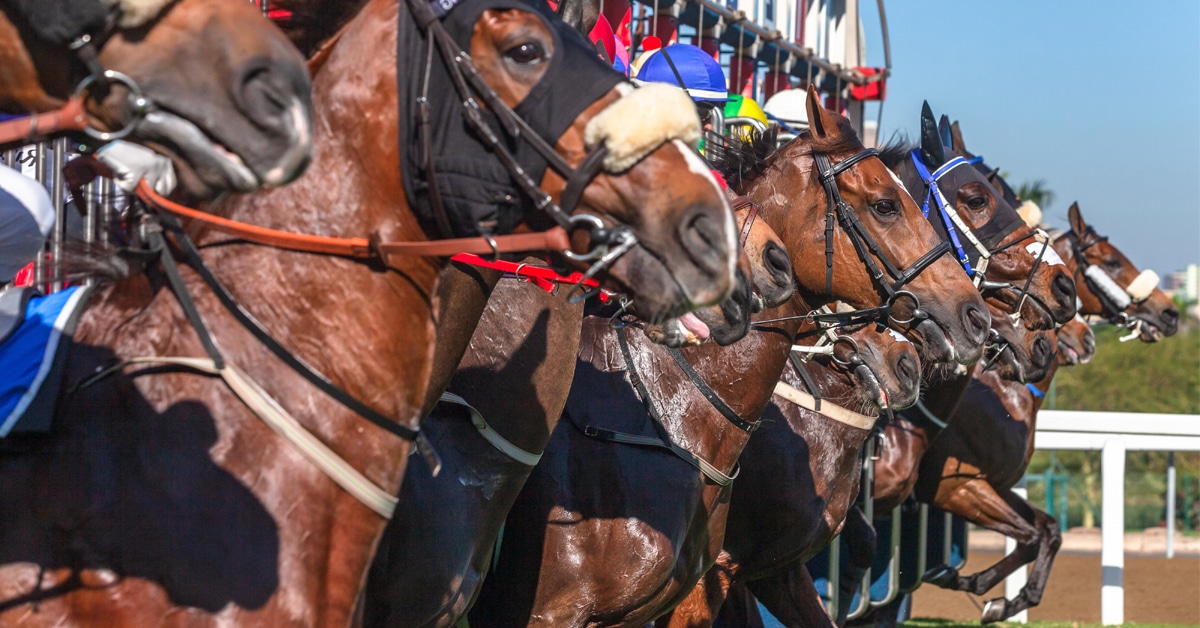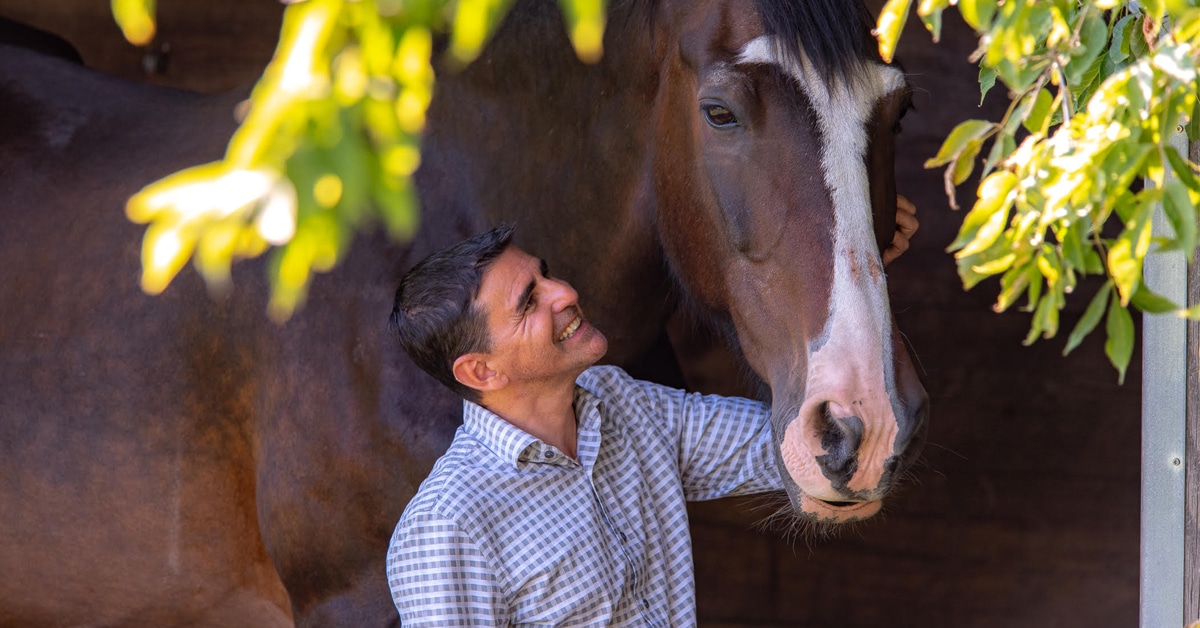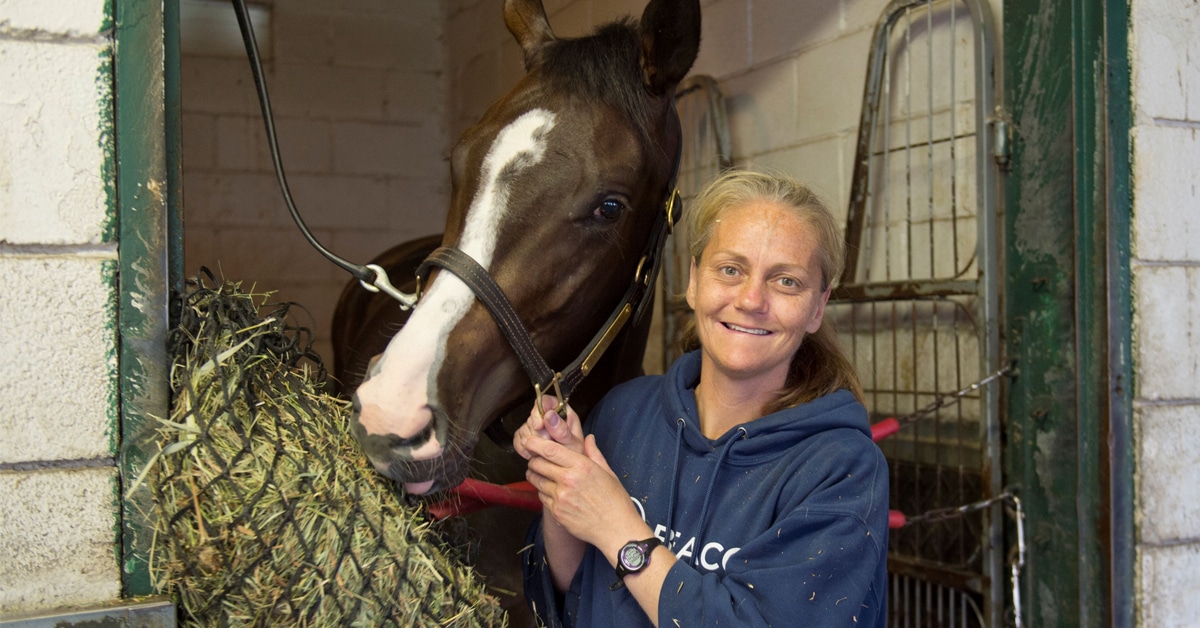In Illinois, seven horses died after contracting EHV-1 (equine herpesvirus), which had been circulating on the Hawthorne Racecourse backstretch between mid-October and late December. Also in December, a barn at Gulfstream Park in Florida was placed under restriction following the death of a horse from a suspected case of EPM (equine protozoal myeloencephalitis), which can be contracted by ingesting feed or water contaminated by a parasite. If a similar situation occurred at a Canadian racetrack – or in your home barn – do you know what steps to take to avoid a catastrophe?
Every time a horse goes off the farm and encounters other horses, it has a chance of contracting an infectious disease. With the threat of virulent diseases such as EHV-1 lurking at track barns and training facilities, biosecurity measures must be taken seriously.
By definition, biosecurity is protection from the transmission of infectious diseases, parasites, and pests using sound management practices. This includes everything from having a quarantine protocol in place during a strangles outbreak to eliminating disease-carrying vectors such as mosquitoes and rats.
Dr. Scott Weese, a researcher and associate professor in the Department of Pathobiology at the University of Guelph, says that the biggest biosecurity mistake owners and trainers make is “the failure to have any plan, especially a written plan.” Weese’s research program focuses on infectious diseases, especially those that can be transmitted between animals and humans.
Biosecurity protocols for racing Thoroughbreds closely mirror those for the ever-transient show horse population. Says Dr. Weese, “The risks posed to racing horses are quite similar to show horses, since both groups move around a lot, have the potential for lots of indirect – and some direct – contact at shows/races, are often at barns with lots of moving horses and in environments where there’s pressure to avoid measures like quarantine.”
Reduce the risk
Ideally, all horses returning from the track should be isolated from the rest of the farm’s population. “The farther the better, but preventing direct contact is most important,” says Dr. Weese, who is also the author of the popular “Worms and Germs” blog. “This is followed by preventing indirect contact (moving buckets, etc., between groups, turning a horse out in a paddock that was just used by one in a different group, transfer of infectious agents on peoples hands or clothing), and preventing aerosol or airborne transmission. The latter can occur, but it’s limited to a few pathogens like EHV and influenza. For those, 30-40 feet (away from the rest of the population) is ideal.”
Dr. Weese suggests that “two weeks is a pretty reasonable recommendation for routine quarantine, with 28 days being used if there is a concern about EHV exposure.”
Another sound preventive practice is to thoroughly disinfect stalls prior to moving horses in – something which is not always possible. “It’s ideal, although variable in practicality,” notes Dr. Weese “An important part of this, if disinfection is to be done, is ensuring that stalls are actually amenable to disinfection. We can’t disinfect dirt, unsealed wood or concrete or other porous or dirty surfaces. Having proper stall materials makes disinfection much easier.” These include sealed wood or concrete, rubber stall matting, etc.
To disinfect a stall, remove all manure and bedding. Hose and scrub down floors and walls with hot water and detergent. Rinse and let dry. Do not use a high-pressure washer unless the stall is going to be vacant for several days, since viruses and bacteria may be aerosolized. Use spray disinfectants that kill both bacteria and viruses (but are non-toxic to animals, humans and the environment) on all stall surfaces, including cross-ties or other hardware. Have your vet recommend the preferred types of products for these applications.
Other equine management techniques to prevent or reduce disease transmission include:
– make sure all vaccinations and deworming are up to date;
– do not let your horses socialize with other horses, especially nose-to-nose contact;
– do not share grooming equipment, tack (esp. bits, tongue-ties, etc.), or water buckets;
– make sure grooms or anyone handling other people’s horses wash and/or sanitize their hands before handling yours;
– have a quarantine protocol in place for horses returning to the farm;
– disrupt the flying pest lifecycle by using insecticides and/or insect traps;
– rodent-proof feed storage areas; set up bait stations pets cannot access;
– discourage visits by raccoons, skunks and opossums (hosts of equine protozoal myeloencephalitis, or EPM) by keeping garbage in a separate building away from the barn or in pest-proof containers, not leaving pet food where horses are stabled, and eliminating potential dens in woodpiles;
– eliminate mosquito breeding grounds, such as standing water, and keep grass/vegetation mowed short adjacent to stable areas;
– keep stalls clean, sweep up spilled feed immediately, and move manure piles away from the barn.
Managing an outbreak
If, despite best practices, you experience a disease outbreak on your farm:
– notify your veterinarian to confirm diagnosis and begin medical treatment. Racetrack officials must also be notified of the disease diagnosis if the outbreak occurs at the track.
– isolate all infected animals in a separate barn, or as far away from the rest of the equine population as possible, especially high-risk animals such as broodmares and foals.
– clearly label any equipment (buckets, blankets, mucking tools, etc.) being used for quarantined horses.
– limit access to the infected animal(s); anyone handling the horses or working in the quarantine area should wear coveralls and boots, which must be removed before leaving the area. If disposable surgical gloves are not worn, hands should be washed with disinfectant soap and/or treated with hand sanitizer before and after contact. Disinfectant footbaths, refreshed daily, should be placed at exit points as well.
Store manure from affected horses well away from the barn (preferably not in open manure piles) and never spread manure from ill horses onto pastures.
– restrict access of pets in quarantine areas.
– never ship horses which you suspect might be ill, or accept new animals onto your farm until an outbreak has been eliminated or is under tight control.
– it is your responsibility to alert others in the Thoroughbred community; i.e. recent visitors to your farm, farriers, transport staff, or anyone who has recently handed the horses(s) in question.
With some forethought, a little common sense, and a biosecurity plan in place, you should be able to keep your racing interests healthy, saving both time and money. And that makes far more sense than closing the stable door after the proverbial horse has bolted.
Current research and related literature:
The Ontario Horse Race Industry Association Biosecurity Committee, which investigates and makes recommendations concerning issues relating to the health and welfare of the horse, including disease control at racetracks, has published protocols for the prevention and control of many common infectious diseases, including West Nile virus, tetanus, strangles, rabies, flu, EEE and EHV-1. They can be accessed at www.ontarioracingcommission.ca/industry.aspx?id=334.
The Latest










